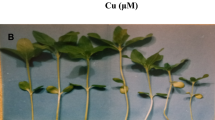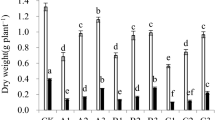Abstract
Given the essential role played by phenol metabolism in many resistance responses to different types of stress, the aim of the present work was to determine how different application rates of calcium may influence this metabolic process. Increased calcium in the nutrient solution in which tobacco plants were grown considerably reduced the foliar concentration of phenolic compounds. Calcium clearly exerted a positive influence on the activities of enzymes (phenylalanine ammonia-lyase, polyphenol oxidase and peroxidase) involved in the metabolism of the phenolics. High dosages of calcium (5 mM) promoted more oxidation than synthesis of these compounds, thus explaining the lower concentration of the phenolics.
Similar content being viewed by others
Author information
Authors and Affiliations
Corresponding author
Rights and permissions
About this article
Cite this article
Ruiz, J.M., Rivero, R.M., López-Cantarero, I. et al. Role of Ca2+ in the metabolism of phenolic compounds in tobacco leaves (Nicotiana tabacum L.). Plant Growth Regulation 41, 173–177 (2003). https://doi.org/10.1023/A:1027358423187
Issue Date:
DOI: https://doi.org/10.1023/A:1027358423187




